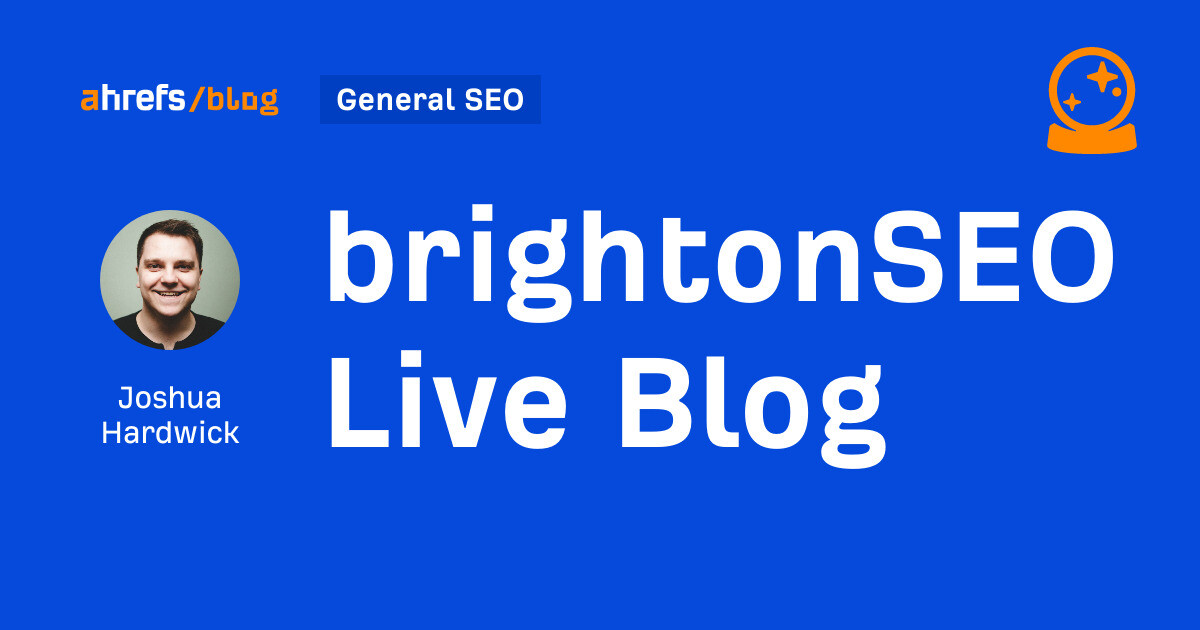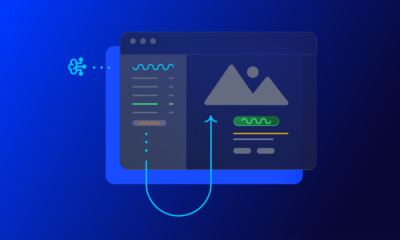SEO
50+ Business-Building Local SEO Tactics For SMBs

Do you have a local small to medium-sized business (SMB)?
If so, you know just how difficult it is to get found and stand out in increasingly competitive search results.
Local SEO strategies must adapt to new features and algorithm updates by the top search engines that affect local search results.
Most local SEO tactics fall into the following three categories.
- Optimizing local listings and citations.
- Optimizing your website and its content.
- Optimizing and working on incoming links.
In this column, you’ll find over 50 specific things you can do right now to help improve your visibility in local search results, divided into those categories above.
Optimizing Local Listings & Citations
Let’s start with your NAP (Name, Address, and Phone Number) data.
In order to get listed and ranked in Google Maps, you need to be a legitimate business, and in some areas, you’ll need a business license (depending on the type of business you’re in).
That NAP needs to be consistent and listed the same everywhere or you’ll have problems later on.
Before you get started with local listings and citations, you’ll also need the following:
- NAP of the business.
- Website URL (list of internal location pages if more than one location).
- A short description (up to 50 characters) that should include your main city name and type of business.
- A longer description (up to 250 characters) that describes who you are and what you do. Include the city name and areas served if applicable.
- Recent photos of your business.
- Category of your business.
- Keywords (that you’d like to rank for). These are typical “city name keyword” type keywords.
The main strategy for local listings and local citations is to get as many as feasible in the right category, with consistent information such as your NAP data.
Local citations are mentions of a local business, which includes NAP data. Local citations may or may not include a link to your website. There are generally two strategies for getting local citations:
- Get the local listings yourself.
- Hire someone else to get them for you.
Taking the time to get local citations yourself can be a really big project, especially if you’re in a competitive industry in your area.
Competitors could have up to hundreds of thousands of local citations, which is nearly impossible to do manually.
If you’re a local business (SMB) in a fairly non-competitive market, then getting a handful of local citations manually is a good strategy. If that’s the case, a non-competitive local SEO strategy for local citations is to get these listings:
- Google Business Profile.
- Facebook.
- Yahoo! Local (currently requires a payment to Yext).
- Apple Maps.
- Bing Places for Business.
- MapQuest.
- Yelp.
- BBB.org.
- FourSquare.
- TripAdvisor.
- Angie’s List.
- TrustRatings.
- YellowPages.
- Home Advisor.
- Thumbtack.
The last two on the list are specific to certain industries, and you’ll want to search certain directories that are specific to your local business’ industry.
Typically, these are easy to find — they’ll rank in the top 10 search results (on the first page).
BrightLocal has a list of top local citations for the U.S. that they maintain.
Submitting to directories (and getting listed) will allow your local business to take advantage of what’s often referred to as “barnacle SEO.”
Your business gets listed on pages on other websites that rank well for a certain keyword you’re targeting.
So for [Dallas carpenters], Google lists sites like Yelp.com, homeadvisor.com, thumbtack.com, houzz.com, and angi.com.
Getting listed on those sites will bring the business leads, as they’re ranking well in Google.
Once you have secured (and verified) those local listings, the next local SEO strategy is to get listed with the main data aggregators. There are three:
- Data Axle (formerly InfoGroup) – Submit your business here.
- Acxiom – Register then submit your business here.
- Localeze – Register then submit your business here.
The data aggregators will take the information of the local business and aggregate it (make it available for literally thousands of websites to use).
Be sure you’re using the correct NAP data and website URLs, as once the data aggregators get hold of your data, it’s tough to get it corrected and updated and can take quite some time.
Using A Third Party For Local Citations & Listings
Another local SEO strategy is to outsource local citations and listings.
Several third-party businesses allow you to submit your local business listing to them (the NAP data, short and long descriptions, URLs, etc.), and they will then use their connections to get that data on other websites.
Many have agreements with certain data providers, and can efficiently get hundreds, thousands, and even hundreds of thousands of local citations.
These third-party services include:
- BrightLocal.
- MozLocal.
- Yext.
- Advice Local.
- SEMrush Listing Management Tool.
- Whitespark.
- Synup.
Some of these services are better than others, mainly because of the agreements they have with other websites and their technology.
Some submit to only 30 websites, and others like Advice Local will end up getting a local business thousands upon thousands of local citations, many of which include a link to the website.
Be wary of any third-party websites that set up a local listing on behalf of the local business but won’t give the local business the login and password for those listings.
Reviews Are Key
Getting reviews of your local business, especially on Google, is going to help rankings and it will encourage others to visit your business.
People do read reviews online, especially for service-type businesses (hotels, resorts, carpet cleaners, home inspectors, carpenters, and even car dealerships).
So, if your local business is a service-type business or another business where reviews are important, then creating a good strategy for dealing with reviews is key.
Local businesses need to request and encourage their customers to leave a review.
There are a lot of ways to encourage customers to leave a review.
Some businesses post a plaque at the business asking for reviews. Other SMBs encourage reviews by offering a “prize” each month to a random reviewer (one local business I frequent gives away an Apple iPad once a month to a random reviewer).
The local business should respond to reviews just as quickly as they are left, regardless if it’s a positive or negative review.
If it’s a positive review or comment, thank the customer for leaving a review.
If it’s negative, deal with it quickly and offer to take the issue offline to minimize any future problems and the negative review getting out of hand.
Even if you miss responding to a review, it’s perfectly okay to respond to reviews left several months in the past.
If the review shows up and can be seen easily, then I recommend responding to the review.
Too many local businesses will take the time to verify their local listings but won’t properly deal with reviews and respond to them in a timely manner.
Local businesses should take the time to develop a strategy for encouraging reviews, tell employees what that strategy is, and designate one or two people to respond to reviews.
Here are a few other ways to manage reviews:
- Designate one or two employees to read reviews and handle review responses.
- Encourage reviews by asking your customers when they check out or pay for services.
- Send customers a letter or postcard in the mail, asking for a review after you provide services.
- Outsource review monitoring and response. Typically, your social media or SEO company (or consultant) will help monitor and respond to reviews. If not, hire someone part-time to handle it for you.
- Add a link on your website to a few other places where customers can leave a review. On the Google Maps listing, for example, Google provides a link to the listing that you can share.
- Add a form on your website so they can anonymously leave a review (or leave their contact info if preferred). There are plugins available that will help you post those reviews on your website. This is especially helpful for businesses that sell products directly on their websites.
- Create a comment box at your business, and provide a pen/pencil and forms. On the form, add a line for the customer’s email address. Ask them if you can post their review or testimonial online. Or, if you have their email address, email them and ask them to leave a review online.
Reviews sent directly to the business can be posted on the company’s website (with the permission of the customer). Reviews left on a third-party website (like on Google, Yelp, etc.) cannot be copied and posted on the company’s website.
Reviews on third-party websites have in fact been given extra weight lately by Google. So sites like these, where customers can leave reviews and feedback, could potentially help with local rankings on Google:
- Yelp (yelp.com).
- Trip Advisor (tripadvisor.com).
- Yellowpages (yp.com).
- Better Business Bureau (BBB.org).
- Manta (manta.com).
- Angie’s List (angieslist.com).
- Foursquare (foursquare.com).
- Facebook (facebook.com).
Another way to get more local reviews is to create a postcard or handout that’s given to customers.
Tell them you’d like their feedback, and use that feedback to make your business even better.
They can leave you a review on your website, or on any of these third-party websites (list the websites where you’d like them to leave a review).
Optimizing Your Local Website’s Content
Without going into too much detail about optimizing a local website, there are several on-site local SEO strategies that are important to consider:
- Optimize for “Near Me” search queries.
- Optimize for local.
- Be a local content machine.
- Buy a local website or blog.
 Screenshot by author, March 2022
Screenshot by author, March 2022Optimize For “Near Me” Search Queries
In the past, there have been more people using “near me” in the number of search queries, such as [restaurants near me] or [pharmacies near me].
Those two search queries assume the search engine knows where the searcher is located.
While “near me” isn’t necessarily gaining in popularity as it once was five years ago, it’s still used quite often.
I recommend doing your own keyword research and specifically looking to see if “near me” is used in search queries in your area.
If there’s a significant amount of searches, you may want to optimize at least one page on your website for “near me” related keywords.
Local Ranking Factors
Advice Local came out with their list of 2021 Local Ranking Factors, which is worth reviewing.
Specifically, they found that the local SEO experts that contributed to the list of ranking factors said that these are important:
A properly optimized GBP listing is the most important ranking “factor.”
So, it’s important to optimize your Google Business Profile listing.
Reviews are important, as well as responding to those reviews.
Then one of the “rising” important factors is the optimization of your website’s pages, which is the “On-Page” referred to above.
For example, make sure that your website has the proper Local Schema markup code, and the NAP data there matches the information in your GBP exactly, especially the name.
Work on getting more backlinks specifically to your individual location pages that include “city name + keyword” in the anchor text of the links.
Be A Local Content Machine
One interesting tactic or “local SEO strategy” I’ve seen lately that works well is becoming a local content machine.
Essentially, by adding a blog to your local business website and writing about local news and events, you’re producing content that others in the city will want to read and share, especially on social networks.
While you’re not necessarily writing about your local business, you’re branding the business locally. When someone wants or needs a company’s services, they’ll think of your business first since they’ve seen it so much online.
A local auto accident and personal injury attorney hired a writer to write articles every single day about accidents in their city.
While they weren’t targeting the actual victims they wrote about, the social media shares went up dramatically and the attorney got his name out there in front of people in the city.
Those social media shares did end up creating links to the website, which in turn helped local rankings.
Buy A Local Website Or Blog
If you’re looking to add a lot of content fairly quickly to your local business website, consider purchasing a local website that already has the content you need.
It could be a local hobby website with local news or articles, or it could be a local blog that has the content.
Perhaps the owner doesn’t have the heart to keep up with the content like they used to or they could just use the money.
Approach a local website or blog about buying their site and incorporating and moving their content over to your local business website.
Setting up redirects from the old domain name to your local business website will help pass any link equity and history over to your local business.
Optimizing And Working On Links
Links to your website have always been an important search engine ranking factor and will continue to be in the future.
Google’s algorithm has always favored links to a website.
But back in 2016, there was a stronger emphasis on links when Google released its Google Possum algorithm update.
Local links or links from other local businesses and organizations have been important for years, and are still a very important part of a local SEO strategy today.
Greg Gifford, Vice President of Search at SearchLab.com, recommends that you can “find easy link opportunities by looking at the relationships you already have.”
Local sponsorships, local volunteer opportunities, and local offline groups can all lead to local links.
Need more ideas for local links? Use Majestic.com to analyze the link profiles of similar businesses in another city.
Another local SEO strategy for local links is to get links from competitors.
Use a web crawler such as the Screaming Frog SEO Spider to crawl their website and review all of your competitors’ outgoing links.
Then, see if there are any links you can get from websites your competitors are linking to.
Essentially, those competitors are passing link credit or PageRank to the other website that then passes it to your website.
Additional Local SEO Tips
Those are a few local SEO strategies that will help local search engine rankings.
But, if that wasn’t enough, here are a bunch more local SEO tips and pointers that you may not have thought of yet.
Local Listings
Undoubtedly, the number one local search ranking factor is the “proximity of the business to the point of search.”
How far is the business away from the person who is doing the search?
For example, Google knows where the searcher is (especially if they are using a mobile phone).
The closer the business is to the person doing the searching, the more likely that business will show up in the Google Maps and Google local listings in the search results.
Some businesses have been known to get a “virtual office” location (or multiple virtual office locations) just for this reason, especially if the customer never visits their location.
While this is a local SEO strategy I don’t endorse, it’s a local SEO strategy worth noting – as a company’s competitors might be doing it.
Keep your local online listings up to date.
If you know you have an update to your NAP data, make sure it gets changed online as soon as possible.
If you’re moving, start updating your local listings.
As soon as you know the new address, start updating local listings online.
It can take months for websites to update your listing, so the sooner you start, the better.
Just as you update your “snail mail” with the US Postal Service when you move to a new location, you’ll want to make sure your local listings are updated as well.
As previously mentioned, the address with the USPS should be the same exact address used in your local listings.
Search engines most likely have access to USPS data and inconsistencies can lead to local ranking problems.
Consistency is key when it comes to NAP data and your business’s ability to rank well locally.
Make sure your local listings are consistent and the same as it is on your website.
Audit your local citations.
Inconsistent NAP data across multiple websites is one of the issues I see a lot.
Auditing your local citations to make sure your NAP is consistent everywhere can really help local SEO.
You might have multiple phone numbers, different versions of your address, or even a different address on some websites that list your NAP data.
Removing duplicate listings and updating inconsistencies can make a huge difference.
Add updated photos on a regular basis to local profiles.
Get on a regular schedule of taking new photos of your location and your business. Add new photos on Google Business Profile, your Facebook page, and other sites that will accept photos such as Yelp.
Add a budget for local ads.
Use Google AdWords to target specific locations and target potential customers in your area. Google is now offering ads on Google Maps listings, so setting aside a budget for those ads will pay off.
Work on getting more reviews.
It’s always a constant battle to get more online reviews than your competitors – but it’s worth it in the long run.
Ask customers for reviews – in-store, at your location, and even via email if you have your customers’ email addresses.
Ask for a review on Google, Yelp, and TripAdvisor if you’re a hotel or resort.
Always respond in a timely manner to every review that’s left, whether it’s a positive or negative review.
On-Site Local SEO
Add marked-up schema.org code to your NAP on your website.
The name, address, and phone number on your site should be marked up with the proper code.
It won’t affect how it displays on your site, but the schema.org code will tell search engines just that – that it’s your name, address, and phone number.
You can also add the markup in JSON-LD (JavaScript Object Notation for Linked Data) code, which can help Google know about your NAP.
Add the proper link to your telephone number.
Adding a “tel://” type of link to your phone number where it’s listed on your site will allow mobile visitors to click on the link and call you.
This can also help search engines display your phone number in the phone call extension area in mobile search results.
Speed up your website’s load time.
Optimizing your site for mobile devices can seriously (and quickly) help rankings.
I’ve seen Google send more traffic to a website just because the website loads faster than it did before. This might mean moving web hosts, redesigning the website, or using a CDN.
All photos of your business should be tagged with the appropriate location information and keywords.
Use an EXIF editor to add location information, keywords, and descriptions of each photo. Each image file can be updated with this information, which can include geotagged location information.
Multiple locations? Create a section on your website for each location.
Don’t create just one page for each location, add additional content if possible.
Each location will have its own unique personality with its location and employees. Why not consistently add content relevant to each location? Add a blog, and add photos to make it relevant.
Use the proper syntax and keywords in your URLs.
For each location, use a format like www.domain.com/location/. Link to each location in the main navigation on your website, but don’t link to sub-pages under each location.
Consolidate separate websites for each location to one main website.
If you’ve set up a separate domain name and website for each location, move those websites to your main site.
Redirect the domain names with 301 redirects and move the content to sub-sections on your main website.
Each location will feed off of the main website’s authority to become more powerful. Don’t forget to update your location’s local listings so they point to the new URL on the main website as well.
Some local search queries can trigger featured snippets.
Depending on your topic, you can increase your website traffic and visibility by showing up in “position zero” for some search queries.
Position zero is the “featured snippet” that Google shows above all of the other search engine listings.
Use SEMrush.com to analyze the keywords you’re currently ranking for, and see if any of them include a featured snippet.
Optimize the content to show up for the featured snippet. Other search queries may also trigger the knowledge graph, instant answer, local pack carousel, or images that you can optimize for.
Make sure you’re using HTTPS.
While you may not be taking credit cards or personal information on your website, moving your entire website to an SSL secure server will give you a leg up.
HTTPS is now a search engine ranking factor for Google, and many local businesses haven’t moved their websites to HTTPS yet.
So moving to HTTPS will put you ahead of your competition. It’s important to make sure that links that you’ve had for a while, such as local citations, point to the HTTPS version of your website.
Add a blog.
Write blog posts on a regular basis about local news, local issues, and local events. Post those on social media and link back to your blog post.
Photos are always liked by local residents, and quite often they’re shared.
Local SEO Audits
Perform an audit of your website.
There are several different types of audits available, including link audits, on-page audits, and local citation audits.
Local citation audits are good for identifying duplicate listings and inconsistent NAP data.
I’ve recently seen a rash of negative SEO being done in the local listings, with some businesses receiving listings being built “for them” with bad data, courtesy of competitors.
A local citation audit can identify a lot of these issues so you can deal with them properly.
Link audits are important, as local maps algorithms are increasingly relying on link data.
Having low-quality links and off-topic links pointing to your website can hurt rankings.
On-page audits are also important to identify areas for improvement on your website.
Fixing issues like formatting, metadata, heading, and even page load speed can improve rankings.
Off-Site Local SEO
Get your customers’ email addresses and use that data to target them on Facebook or for an email newsletter.
You can upload your customers’ email addresses and phone numbers to Facebook and target them with ads.
Then, create a lookalike campaign on Facebook to target even more people with the same demographics as your current customers.
Optimize for voice search.
More people are using voice search to find local businesses. They use voice search to help them find a business near them.
For example, they might ask, “Where is the nearest Italian restaurant?” Check out the Local SEO Guide study of “near me” local SEO ranking factors that I previously mentioned. It’s an interesting read.
Use the barnacle SEO strategy.
For your main keywords (the ones you want to rank for), take a look at who is currently ranking – and it may not be your own website.
If you can optimize your listing or show up well on another site that’s currently ranking for your keyword, then you’ll still see some traffic and get business.
If a Yelp, Home Advisor, Thumbtack, Angie’s List, or BBB page is ranking, then make sure your local business is listed on those pages.
Participate and sponsor local events, organizations, and non-profits.
These will increase your local visibility and will quite often include a link back to your website, which ultimately helps your search engine rankings.
Final Thoughts
It takes a holistic approach to optimize your website for search. The combination of on-site optimizations and offsite listings and links will help boost your SMB’s visibility in local search results.
More Resources:
Featured Image: Olivier Le Moal/Shutterstock
SEO
Google Declares It The “Gemini Era” As Revenue Grows 15%

Alphabet Inc., Google’s parent company, announced its first quarter 2024 financial results today.
While Google reported double-digit growth in key revenue areas, the focus was on its AI developments, dubbed the “Gemini era” by CEO Sundar Pichai.
The Numbers: 15% Revenue Growth, Operating Margins Expand
Alphabet reported Q1 revenues of $80.5 billion, a 15% increase year-over-year, exceeding Wall Street’s projections.
Net income was $23.7 billion, with diluted earnings per share of $1.89. Operating margins expanded to 32%, up from 25% in the prior year.
Ruth Porat, Alphabet’s President and CFO, stated:
“Our strong financial results reflect revenue strength across the company and ongoing efforts to durably reengineer our cost base.”
Google’s core advertising units, such as Search and YouTube, drove growth. Google advertising revenues hit $61.7 billion for the quarter.
The Cloud division also maintained momentum, with revenues of $9.6 billion, up 28% year-over-year.
Pichai highlighted that YouTube and Cloud are expected to exit 2024 at a combined $100 billion annual revenue run rate.
Generative AI Integration in Search
Google experimented with AI-powered features in Search Labs before recently introducing AI overviews into the main search results page.
Regarding the gradual rollout, Pichai states:
“We are being measured in how we do this, focusing on areas where gen AI can improve the Search experience, while also prioritizing traffic to websites and merchants.”
Pichai reports that Google’s generative AI features have answered over a billion queries already:
“We’ve already served billions of queries with our generative AI features. It’s enabling people to access new information, to ask questions in new ways, and to ask more complex questions.”
Google reports increased Search usage and user satisfaction among those interacting with the new AI overview results.
The company also highlighted its “Circle to Search” feature on Android, which allows users to circle objects on their screen or in videos to get instant AI-powered answers via Google Lens.
Reorganizing For The “Gemini Era”
As part of the AI roadmap, Alphabet is consolidating all teams building AI models under the Google DeepMind umbrella.
Pichai revealed that, through hardware and software improvements, the company has reduced machine costs associated with its generative AI search results by 80% over the past year.
He states:
“Our data centers are some of the most high-performing, secure, reliable and efficient in the world. We’ve developed new AI models and algorithms that are more than one hundred times more efficient than they were 18 months ago.
How Will Google Make Money With AI?
Alphabet sees opportunities to monetize AI through its advertising products, Cloud offerings, and subscription services.
Google is integrating Gemini into ad products like Performance Max. The company’s Cloud division is bringing “the best of Google AI” to enterprise customers worldwide.
Google One, the company’s subscription service, surpassed 100 million paid subscribers in Q1 and introduced a new premium plan featuring advanced generative AI capabilities powered by Gemini models.
Future Outlook
Pichai outlined six key advantages positioning Alphabet to lead the “next wave of AI innovation”:
- Research leadership in AI breakthroughs like the multimodal Gemini model
- Robust AI infrastructure and custom TPU chips
- Integrating generative AI into Search to enhance the user experience
- A global product footprint reaching billions
- Streamlined teams and improved execution velocity
- Multiple revenue streams to monetize AI through advertising and cloud
With upcoming events like Google I/O and Google Marketing Live, the company is expected to share further updates on its AI initiatives and product roadmap.
Featured Image: Sergei Elagin/Shutterstock
SEO
brightonSEO Live Blog

Hello everyone. It’s April again, so I’m back in Brighton for another two days of Being the introvert I am, my idea of fun isn’t hanging around our booth all day explaining we’ve run out of t-shirts (seriously, you need to be fast if you want swag!). So I decided to do something useful and live-blog the event instead.
Follow below for talk takeaways and (very) mildly humorous commentary. sun, sea, and SEO!
SEO
Google Further Postpones Third-Party Cookie Deprecation In Chrome

Google has again delayed its plan to phase out third-party cookies in the Chrome web browser. The latest postponement comes after ongoing challenges in reconciling feedback from industry stakeholders and regulators.
The announcement was made in Google and the UK’s Competition and Markets Authority (CMA) joint quarterly report on the Privacy Sandbox initiative, scheduled for release on April 26.
Chrome’s Third-Party Cookie Phaseout Pushed To 2025
Google states it “will not complete third-party cookie deprecation during the second half of Q4” this year as planned.
Instead, the tech giant aims to begin deprecating third-party cookies in Chrome “starting early next year,” assuming an agreement can be reached with the CMA and the UK’s Information Commissioner’s Office (ICO).
The statement reads:
“We recognize that there are ongoing challenges related to reconciling divergent feedback from the industry, regulators and developers, and will continue to engage closely with the entire ecosystem. It’s also critical that the CMA has sufficient time to review all evidence, including results from industry tests, which the CMA has asked market participants to provide by the end of June.”
Continued Engagement With Regulators
Google reiterated its commitment to “engaging closely with the CMA and ICO” throughout the process and hopes to conclude discussions this year.
This marks the third delay to Google’s plan to deprecate third-party cookies, initially aiming for a Q3 2023 phaseout before pushing it back to late 2024.
The postponements reflect the challenges in transitioning away from cross-site user tracking while balancing privacy and advertiser interests.
Transition Period & Impact
In January, Chrome began restricting third-party cookie access for 1% of users globally. This percentage was expected to gradually increase until 100% of users were covered by Q3 2024.
However, the latest delay gives websites and services more time to migrate away from third-party cookie dependencies through Google’s limited “deprecation trials” program.
The trials offer temporary cookie access extensions until December 27, 2024, for non-advertising use cases that can demonstrate direct user impact and functional breakage.
While easing the transition, the trials have strict eligibility rules. Advertising-related services are ineligible, and origins matching known ad-related domains are rejected.
Google states the program aims to address functional issues rather than relieve general data collection inconveniences.
Publisher & Advertiser Implications
The repeated delays highlight the potential disruption for digital publishers and advertisers relying on third-party cookie tracking.
Industry groups have raised concerns that restricting cross-site tracking could push websites toward more opaque privacy-invasive practices.
However, privacy advocates view the phaseout as crucial in preventing covert user profiling across the web.
With the latest postponement, all parties have more time to prepare for the eventual loss of third-party cookies and adopt Google’s proposed Privacy Sandbox APIs as replacements.
Featured Image: Novikov Aleksey/Shutterstock
-

 PPC7 days ago
PPC7 days ago19 Best SEO Tools in 2024 (For Every Use Case)
-
SEARCHENGINES6 days ago
Daily Search Forum Recap: April 19, 2024
-

 WORDPRESS7 days ago
WORDPRESS7 days agoHow to Make $5000 of Passive Income Every Month in WordPress
-

 MARKETING6 days ago
MARKETING6 days agoBattling for Attention in the 2024 Election Year Media Frenzy
-

 WORDPRESS5 days ago
WORDPRESS5 days ago13 Best HubSpot Alternatives for 2024 (Free + Paid)
-

 SEO7 days ago
SEO7 days ago25 WordPress Alternatives Best For SEO
-

 WORDPRESS6 days ago
WORDPRESS6 days ago7 Best WooCommerce Points and Rewards Plugins (Free & Paid)
-

 MARKETING7 days ago
MARKETING7 days agoTinuiti Marketing Analytics Recognized by Forrester
















You must be logged in to post a comment Login